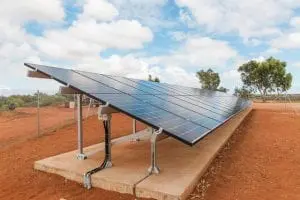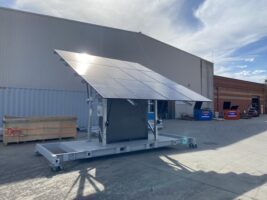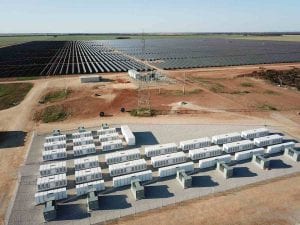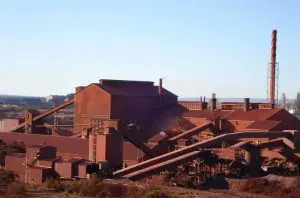We are currently facing a dilemma in Australia. Wind power often gets a hard rap in the press and is met with suspicion, if not concern, by communities. Yet it is currently the most deployable and cost-effective form of renewable energy, especially at larger scales.

Although a diversity of renewable energy technologies operating at a variety of scales will likely be essential to transforming Australia’s electricity supply to largely, or wholly, renewable sources, there is no doubt that wind power will play an important role in the next decade and beyond. Wind power is projected to be the major contributing technology for achieving Australia’s 20% by 2020 renewable energy target. But will this be possible in the current sociopolitical context? How can we ensure wind power is delivered in a way that builds social acceptance and contributes positively to communities?
A recent trip to Denmark and Germany provided a comparison point.
On the ferry to Samso Island, Denmark
Samso Island is beautiful. Its quaint old fashioned Danish towns, complete with reed-thatched roofs, lie between rolling hills of wheat, strawberries and potatoes. Craggy cliffs frame stony beaches, and its well-kept roads and very little traffic make it a haven for families who love bike riding. All in all it’s an idyllic miniature of Denmark.
On the ferry over to the island, we pass 10 offshore wind turbines. I run around the ferry trying to find the best vantage point. I am spellbound: they are beautiful. Slender, graceful arms travel swiftly, smoothly through the air—and with each turn they generate emission-free electricity and income for their local shareholders. A slightly embarrassing moment follows when I realise that no one else is taking any notice of the turbines and that I am one of those ‘nutty tourists’ who gawks at perfectly normal things. ‘Windmills’ are a part of life in this region of Europe. While they don’t dominate every view, they are common in the landscape and ‘normal’ in people’s psyche.
A diversity of wind development models
From my guesthouse on Samso Island, I look out across rippling grass plains and a lake to fields speckled with turbines. The undulating farmland looks a lot like Australia: grassy paddocks interspersed with homesteads every few kilometres and small towns dotted throughout. The most striking visual difference is the presence of wind turbines here and there. All sorts of wind turbines: tiny 6 kW ones on a simple 10 m pole; larger ones on 20 m lattice stands; the big 100m tall 2 MW ones more common in Australia; and, of course, the classic, old grain or water pumping windmills that have been in the landscape for over 100 years.
In Denmark, wind development comes in all shapes and sizes and, more often than not, local people are involved in owning and benefitting from the presence of wind turbines in the landscape. Germany is much the same, with more than 50% of its installed wind capacity owned directly by the citizens (Gipe, 2012).
Sometimes, wind power supplies just one home or farm; other times a group of homes, a town or a region become net electricity exporters, as happens with the larger wind farms common in Australia. Samso Island (pop. 2800) generates 100% of its electricity and offsets all its transport emissions with 11 onshore and 10 offshore (1–2.3 MW) wind turbines, all of which are owned by local people and the local municipality.

The turbines make me irrationally happy as I ride past on my bicycle. I get a lot of hope and satisfaction knowing that communities like this have figured out how to meet
their electricity needs in a responsible, environmentally safe and socially beneficial way. (And I enjoy knowing that the local beer I drink is carbon neutral.) The fact that the island is 100% renewable is now part of the local identity and a source of pride. Samso gets thousands of ‘energy tourists’ a year, as well as sun and sea tourists.
A different story back home
In Australia, the wind industry has been dominated by one development model: large farms, comprising 30 to 120 1.5+ MW turbines, owned by corporate developers. Although this model has meant that Australia can now boast at least a small wind industry, supplying 1.5% of national electricity demand (and 24% in SA in 2011–12), it has had some down sides.
For whatever reason (one can hypothesise about self-interested lobby groups, inequitable distribution of financial benefits or inadequate community engagement), wind power has emerged as a contentious sociopolitical issue, culminating in the introduction of highly restrictive wind development guidelines in Victoria in late 2011.
These laws subject wind power to a development approval regime that is stricter than for any other form of development in Australia and is the strictest of any wind- related regulation in the world.
Rather than focusing on how this came to be the state of play, this article focuses on the factors that build community support; the things that can lay the foundations for a vibrant wind industry.
At home with wind power
Back on Samso Island, after a meandering bike ride, I arrive at a small fishing village called Ballan. Ballan is home to the Samso Energy Academy (energiakademiet.dk/en), the organisation that oversees renewable energy development and education on the island.
Beautiful woollen socks entice me into a nearby shop and I find myself in the Samso equivalent of a Country Women’s Association outlet. I get chatting to the shop assistant, Karen Hansen, and ask her what she thinks of Samso’s transition to renewable energy.
She tells me that at first some local people were concerned about living near wind turbines because of the possible noise and visual impacts, but now they are up and running everyone is happy with them.
Karen explains, “The head of the Energy Academy, he was born on the island, he talks to people and gets them feeling comfortable. He asks, ‘What do you think?’ And he’s a very good listener. People have confidence in him.” She adds, “Tell your people it’s a good idea to make something like this.”
What are the benefits?
Community ownership and involvement in wind projects delivers many social, environmental and economic benefits—which in turn leads to greater community support. Retaining community control over decision making, keeping economic benefits local, building local skills and understanding, and developing feelings of trust, participation and pride are all part of this—on top of carbon abatement!
Preben Maergaard (2012) from Denmark, who has been active in the renewable energy sector for 40+ years, presents a compelling case that a vibrant community-owned wind power sector is indeed a prerequisite for high levels of wind power, due to its role in building social support.
Why is community ownership and benefit so important? Because it builds a strong base of renewable energy advocates: people who understand, participate in, benefit from and advocate for renewable energy in their communities—to others, to the media and to the politicians.
“I think the turbines are beautiful. We own shares and every year we get money back. The feeling [of owning shares] is good,” says Karen Hansen from Samso Island.

Community wind in Australia
Australia’s first community-owned wind farm, the 4.1 MW Hepburn Wind project near Daylesford, Victoria, began generating electricity in 2011.
The second, a 1.5 MW project in Denmark, WA, is due to start operating in February. Three groups have started social and technical feasibility studies, five others are just starting out, and many more have expressed interest in establishing a community wind farm.
This form of development could contribute significantly, in terms of megawatts and community support, to the expansion of wind power in Australia.
But how do we get there?
The processes we choose to use in developing and running wind projects affect how a project is received and how genuinely it becomes owned and accepted by the community.
We need to ask questions like:
– What level of involvement does the community have in the project?
– What is the role of the community? Are they supporters, advisors, advocates, co-owners? Who makes decisions?
– How is the income distributed?
– Who owns the project?
A CSIRO study in 2012 found that for community and corporate projects alike, community engagement and involvement are key factors to successful project delivery and achieving a broad ‘social licence’ to operate.
The concept of a social licence emerged from the mining industry 15 years ago. It describes a “level of acceptance or approval continually granted to an organisation’s operations or project by local community” (ACCSR). This acceptance can extend beyond a specific project to general public attitudes and building a culture of support.
A road map
The Community Power Agency has developed a ‘road map’ (see facing page) to give guidelines on community engagement processes that can help wind and other renewables develop a strong social licence to operate.
The key to genuine and effective community engagement seems to lie in building local relationships and enabling many avenues for interaction. The ability to communicate well and responsiveness to issues, concerns and ideas is essential to building trust and acceptance, as is starting engagement early.
We also need processes that involve local people in meaningful and substantial ways. This might mean community ownership of wind power, but it could also mean partial ownership of a bigger, corporate-led project, or simply corporate projects engaging in deeper, more beneficial ways with the community.
Policy support needed
At the 2012 World Wind Energy Conference in Bonn I was surprised to hear many people echoing the message that community involvement was crucial. Politicians, industry heads and the community sector alike commented that community involvement and ownership had played a pivotal role in the social acceptance of wind power and the industry’s success in countries such as Germany and Denmark.
Soerensen (2012) reflects on the effects of changes in Danish wind policy. A change in 1995 withdrew support mechanisms for community ownership in favour of larger, corporate-owned developments—and led to the rise of the first coordinated wind opposition movement in Denmark.
In 2008, the government re-introduced mechanisms to encourage local ownership and participation. Now, 20% of shares in all wind developments have to be offered to the local community before anyone else, including the developer.
In addition, policies such as differentiated feed-in-tariffs, that offer premiums to community-owned projects, and tax breaks for income from wind shares have supported the proliferation of community- scale and community-owned wind farms in Denmark and Germany. In Australia, community-owned and community-scale wind farms face a policy void as well as a range of institutional barriers.
A recent review of community renewables in Australia (Ison et al, 2012) identified the most significant challenges facing the sector as financing the development stage and getting a fair price for the sale of the project electricity. Both of these challenges have been effectively addressed through policy in all countries with vibrant community renewable energy sectors.
These policy questions, combined with building broad community support for wind power, will be key factors underlying the future success of wind power in our country. Wind power has an important role to play in our transition to a clean energy future. I look forward to a wind industry in Australia that engages with many actors, at many scales, and distributes benefits far and wide.
Source: CPA Agency. This article was first published in ReNew Magazine (2013) Issue 123 p. 34-37 .











